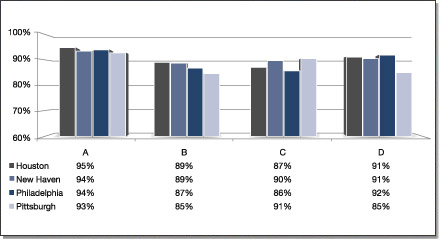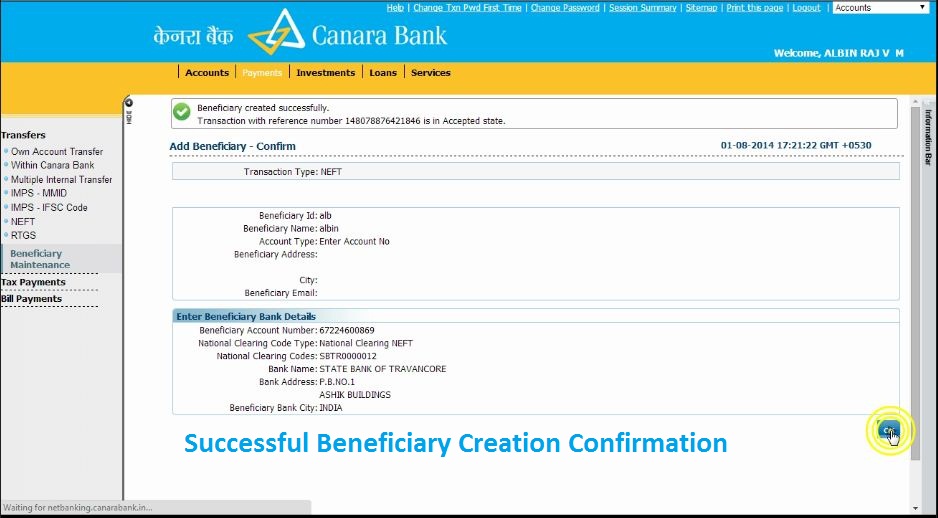Asset quality

A possible explanation of this result stems from the burst of the NPL phenomenon which depressed the quality of loan portfolios of commercial banks, traditionally focused on the loans business, forcing them to extensive provisions policies and requiring additional capital buffer to cover loans losses. Regarding Model 7, both the total capital ratio and the leverage enter significantly and positively for low profitable banks and the effect persists across all quantiles considered, but whether the former’s effect decreases the latter’s effect increases. Regarding asset quality measures, both the Texas ratio spread and the coverage ratio enter significantly and negatively for less profitable banks and the effect persists, with minor magnitude, only up to moderate profitable banks then disappears. The LLP ratio, instead, shoes the same effect and magnitude trend but persists also for the upper quartile of the ROA’s distribution. Finally, the funding structure enters significantly and negatively for less profitable banks and its effect persists but decreases for the higher percentiles considered.
A bank reporting aggressive loan growth relative to its industry peers warrant further scrutiny and monitoring. CAMELS ratings apply to financial institutions, which include credit unions as well as banks. The National Credit Union Administration (NCUA) supports the CAMELS rating system and provides training to staff on evaluating the six components. The same relationship also emerges for the interlink between the LLP ratio and equity volatility, but, in this case, the coverage ratio gains statistical significance for small banks, instead. We explore this final point by dividing all Ninth District banks into satisfactory and less than satisfactory conditions.
The NSFR will incentivise banks towards increasing retail customer deposits, long-term wholesale funding (greater than six-month interbank lending) and equity. Banks with strong retail deposit franchise will find it easier to satisfy the NSFR liquidity requirements compared with banks with heavy dependence on wholesale funding (e.g. capital market business). In addition to the core NPL ratio, it is equally important to examine the amount of reserves a bank has asset aside to cover its NPLs. The loan-loss reserves / NPL ratio (“loan loss reserve coverage”) indicates the extent to which a bank’s loan loss reserve will absorb the losses incurred on loans designated as non-performing. If loan loss reserve coverage is high, this means that the bank has a high cushion against credit losses. In extreme cases, where there is an exceptionally high level of problem loans (also known as non-performing loans or “NPL”), this could trigger a loss in confidence, leading to bank runs.
Asset Quality Review Thematic Areas
In addition, regulators should also account for the implications in terms of lower profits and capital generation ability that stem from rapid and massive provisioning despite their clear favourable impact on Texas ratio values. Finally, we include the price-to-book ratio (P/B) as proxy variable which assesses bank performance in terms of market value created for shareholders. Indeed, the P/B ratio represents the ability of the firm to generate excess earnings in the future, from its current capital structure along its embedded future growth opportunities. We employ the Merton’s Distance to Default (DtD) as proxy variable able to assess bank stability [63].
We, therefore, infer its poor prediction ability of bank stability with respect to the total capital ratio, also coherently with Model 4 results and the baseline model. The Texas ratio enters significantly and negatively for banks with lower values of distance to default, showing a decreasing effect for higher percentiles. This result is coherent with Model 4 and the relationship highlighted by the baseline model.
Risk results
A bank’s inherently high leverage makes its earnings particularly sensitive to deteriorating in asset quality of its loan book. When a bank makes a significant number of loans that borrowers cannot repay, this would expose the bank to higher write-offs, which would erode earnings and weaken capital buffers. In turn, this would constrain the bank’s ability to grow loan book, especially when it is facing a capital shortfall with respect to the regulatory capital requirements. The study conducted by Jokipii and Milne [62], in particular, allows us to bring out the performance dimension from the interlink between bank capital and bank risk. Findings point out that banks with small capital buffers adjust the required level faster than banks with higher capital buffers, raising capital and lowering risk.

In the case of private sector banks, the impact was limited to big lenders like ICICI Bank and Axis Bank. To get a high capital adequacy rating, institutions must also comply with interest and dividend rules and practices. Other factors involved in rating and assessing an institution’s capital adequacy are its growth plans, economic environment, ability to control risk, and loan and investment concentrations. The system can be used to more easily identify banks that are weak and pose a risk so that those banks can resolve their issues. So, banks that are given an average score of less than 2 are considered to be higher-quality institutions, and those with scores greater than 3 are considered to be less-than-satisfactory institutions. If a bank has a higher score, it is more likely to be subject to more examinations.
Asset Quality
Basel III thus introduced two minimum liquidity standards, Liquidity Coverage Ratio (LCR) and Net Stable Funding Ratio (NSFR). (i) Improving the quality of bank regulatory capital by placing a greater emphasis on going-concern loss-absorbing quality in the form of common equity tier (CET) 1 capital. Many banks ran into financial distress during GFC, attributed to excessive risk-taking and on the back of aggressive risk policies and inappropriate incentives. Certain “Too Big to Fail” distressed banks required massive amounts of capital injection by central banks in order to preserve the financial stability of the global economy. O Above-average loan growth could imply lower underwriting standards and more aggressive strategy, could be a precursor to asset quality risk in a downturn. Government bonds and T-bills are considered as good quality loans whereas junk bonds, corporate credits to low credit score firms etc. are bad quality loans.

When their asset quality decreases, banks must hold more capital to cover the related credit risk and book higher provisions to prepare for the expected losses. The book leverage ratio, instead, is only significantly related to equity volatility but fails to explain all the performance variables therefore failing to find a position within the framework designed by our hypothesis. Our results, indeed, support an asymmetric response in terms of idiosyncratic and systematic risk to provisions policies as either the LLP ratio and the Texas ratio spread are positively related to systematic risk but do not appear to significantly affect idiosyncratic risk. In addition, large provisions, in both their specifications of LLP ratio and Texas ratio spread, are proved to undermine bank stability. Contrary to our expectations, we find a negative and statistically significant relationship between our measure of funding structure and idiosyncratic risk.
What is Asset Quality?
RBI later revealed that AQR will not be made an annual or a frequent exercise. Examiners assess institutions’ capital adequacy through capital trend analysis. Examiners also check if institutions comply with regulations pertaining to risk-based net worth requirements. Where ROA is the return on assets, ETA is the Equity-to-Asset ratio, and \(\sigma ROA\) is the standard deviation of the return on assets. Given that the Z-score presents a high level of skewness, we use the natural logarithm of Z-score in line with Liu et al. (2013).
- This result is coherent with Model 4 and the relationship highlighted by the baseline model.
- O If a bank’s year-on-year loan growth is above 20%, this is a warning of asset quality problems to come.
- Once the asset quality of a particular investment is determined, banks and other institutions can go about assessing the risk levels of their entire portfolios.
- We start considering the crisis period to check whether the relationships outlined in the baseline model change during the crisis.
We, therefore, rerun the baseline model differentiating between above and below the median value of bank total assets. Finally, we run a quantile regression to gauge the behaviour of the relationships we consider across the percentiles of the distribution. We find a negative and significant relationship between our liquidity measure and idiosyncratic risk. Since the sample consists essentially of commercial banks, it is plausible to affirm that the market perceives positively banks with a higher level of loans for a given value of deposits as it expresses a greater focus on their core business [29]. We use several measures for identifying the level of capitalization of banks. This measure is the ratio of the sum between Tier1 and Tier2 to the risk-weighted assets.
Regarding Model 8, the total capital ratio shows a significant and positive varying effect on PBR across all quantiles considered, whereas the book leverage shows a significant and negative decreasing effect on PBR for the bottom and middle quartile of its distribution. The former relationship is in line with baseline results, whereas the latter suggests that leverage is not a good predictor for high banks’ PBRs. Regarding asset quality measures, the LLP ratio enters significantly and negatively for low-PBR banks, and this effect increases for the higher percentiles. Finally, our liquidity measure shows a significant and negative increasing effect on PBV across all quantiles considered, whereas the funding measure shows a significant and negative varying effect on PBV across all quantiles considered. Regarding Model 2, the book leverage enters significantly and positively for banks with moderate values of the equity beta. The Texas ratio spread shows, instead, a significantly increasing effect on banks with moderate and high values of equity beta.
Why Does CAMELS Ratings Include Earnings?
It shows, indeed, a negative and statistically significant relationship with the Z-score for small banks and a negative and statistically significant relationship with the distance to default for large banks. The Texas ratio has been widely employed in the USA as an asset quality measure and has been further adopted in Europe by the ECB as a high-level NPL metric in its asset quality assessments. Provisions, proxied by the LLP ratio, show a positive and statistically significant relationship with equity volatility that does not validate the signalling hypothesis. Still, in its quality of LLP ratio, provisions appear to negatively affect bank performance in both its proxies of profitability and market value.
Bank managers are concerned with the quality of their loans since that provides earnings for the bank. Loan quality and asset quality are two terms with basically the same meaning. The AQR by the RBI revealed higher level of asset quality deterioration or NPAs with the inspected banks.
- Regarding asset quality measures, both the Texas ratio spread and the coverage ratio enter significantly and negatively for less profitable banks and the effect persists, with minor magnitude, only up to moderate profitable banks then disappears.
- The breakdown of its economic drivers allows us for further considerations about the eventual side-effects underlying the implementation of the new regulatory framework on NPLs.
- The Texas ratio has piqued the interest of some scholars like Jesswein [60] and Siems [85].
- The literature shows as more efficient banks perform better than the others and exhibit a lower level of risk.
In an economic crisis, asset quality is a key concern as many borrowers default on their loans and the volume of non-performing loans increases. To mitigate losses and the impact on banks’ soundness and capacity to lend, banks must follow solid lending criteria at all times, actively monitor asset quality, and proactively tackle non-performing loans. The interest banks earn on these assets is a key component of their income and profit, and the risk of the loans not being paid back is their main risk. The higher this credit risk, the lower the quality of the loan, or “asset quality”.
It is the Texas ratio, namely the ratio between the gross value of NPLs and the sum between loan loss reserves (LLR) and the available tangible common equity (TCE). It is considered by the ECB as a key performance indicator and provides information regarding the level of coverage of troubled loans whose impact on bank risk and performance we are ultimately interested in deepening. About the other variables, the positive and statistically significant relationship between our liquidity and funding variables with equity volatility holds also during the crisis period as well as the negative and statistically significant relationship between size and equity volatility. The relationship between book leverage and stock volatility remains negative, corroborating the hypothesis that the book leverage of banks is probably perceived externally as a dimension factor. Furthermore, when we focus on our accounting stability measure, the relationship between leverage and Z-Score is negative. It follows that more leveraged banks subtended during the crisis period a lower level of stability.
Seven QA Metrics Worth Adopting
Conversely, size seems to play an active role in moderating the relationship between the coverage ratio and both EVA and ROA. Indeed, the coverage ratio shows a negative and statistically significant relationship with EVA for small banks, whereas it shows a negative and statistically significant relationship with ROA for large banks. However, this explanation is confuted by the negative and statistically significant relationship between EVA and the coverage ratio which supports the more conservative view about the information that provisioning gives to the market. We further introduce to this framework the asset quality dimension which emerges from the set of accounting, regulatory and supervisory interventions deployed to address the burst of the NPLs’ issue. One measure, in particular, seems able to reconcile asset quality with the interlink described so far between capital, risk-stability and performance.